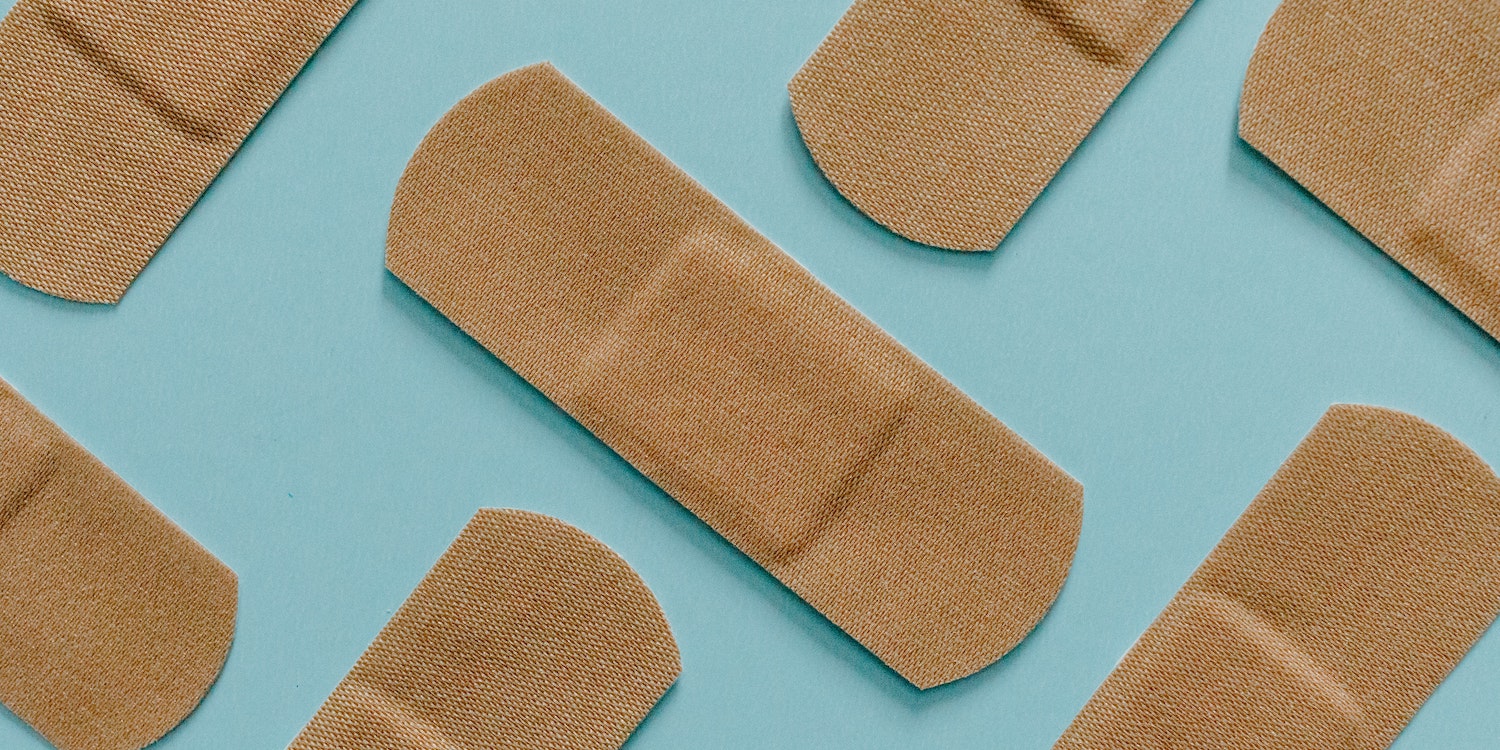You’re in the kitchen, cutting your vegetables. You’re wondering if you have a jar big enough for the celery nub you’re cutting so you can replant it. Don't Throw Away Those Scrap! You're immersed in the idea that vegetables can regrow a whole entire plant when you slice your finger.
Luckily, the damage isn’t too bad, even if it does sting like the worst paper cut in the history of the world. The cut isn’t deep, but you will need a bandaid to stop the bleeding. As you make your way to your first aid kit and open it (one handed, props), you pull out a box of bandaids.
“These have been in this first aid kit forever…” you think to yourself, “How old are these anyways?”
As you wrap a bandaid around your cut, you start reading the box. You can’t figure out how old they are. But you are disappointed to read what they’re made of.
What Are Bandaids Made Of?
Bandaids consist of three different parts, the outer flesh tone part, the sticky part, and the cotton pad. Let’s break down what each part is made of.
The Outer Flesh Tone Part
First off, we need to point out that we’ve never found a bandaid that actually matches our flesh tone. Even when they made the box of different flesh tone “colors”.
But, this section of the bandaid is often made out of coated paper, and/or some type of plastic. Usually it’s PVC, polyethylene or polyurethane.
The Sticky Part
Is there anything worse than the slow tear of a bandaid, as it one by one rips your hair out and pulls on your skin? This sensation happens because of what we like to call, the sticky part.
The sticky part is the inside layer of the bandage that helps it stick to your skin and keep dirt out. Good for avoiding infections, bad for stubborn arm hairs. It’s made of an acrylate, which is a fancy way to say vinyl resins. For people who are allergic to bandages, the sticky part is often what they’re allergic to.
The Cotton Pad
Then there’s the cotton pad, which occasionally gets stuck in your cut. For better or worse, sometimes there is a layer of porous-polymer coating over the top of the cotton. This keeps the cotton from getting stuck to your cut.
And while none of these materials are especially shocking, they’re all, unfortunately, not great for our planet.
Are Bandaids Bad for the Environment?
This question greatly depends on what the bandage is made of. Unfortunately, in most cases the answer is yes– traditional bandaids are bad for the environment.
As we mentioned in the last section, traditional bandaids are often made with plastic. If shoved to the bottom of a landfill, they can take over a thousand years to decompose. There is a high likelihood that every bandaid you’ve ever used is still around, trying to decompose without a lot of progress. Or, it has turned into harmful PVC chemicals thanks to the sun.
Some woven bandages are made of a mix of natural and synthetic fibers, which can be better for the environment but often still aren’t great.
It’s likely not surprising that bandaids made of biodegradable or compostable materials are best for the environment. Bandages made of compostable materials will break down over several weeks.
And, if you know us, you know we do our best to avoid single use items. But we’ll let this one slide.
Our Recommendation for Sustainable Bandages
PATCH Bandages. They’re organic, bamboo bandages that are great for any and all boo boos.
What Are PATCH Bandages Made Of?
PATCH bandages are made of 100% organic, sustainable and fast-growing bamboo fiber. For the sticky part, they use hypoallergenic, pressure-sensitive adhesive. So, they’re a great option for anyone with sensitive skin.
In fact, PATCH’s website mentions that 1 in 4 people have a reaction to bandage adhesives. So if you can’t use traditional bandaids, you’re not alone!
Do Other People Like PATCH Bandages?
We think PATCH Bandages are super neat, but you don’t have to take our word for it. Internet sustainability blog, Treehugger, rated the five best sustainable bandages and found PATCH Bandages to be best overall.
Are There Different Types of PATCH Bandages?

Yes! We carry four different types of PATCH bandages.
PATCH Natural: The ideal bandage for a simple cut. Made without irritants, toxins, or plastic.
PATCH Activated Charcoal: Did you get a cut doing something cool, like jumping through waterfalls in Costa Rica? Or Did you step on a rusty nail in your backyard? Don’t worry, the charcoal bandage can help draw out impurities and infections from minor woods. So adventure on! Or keep walking barefoot in the backyard.
PATCH Kids: We like to call these ones PATCH Kids, but they are also for really cool adults! These bandages are enriched with coconut oil to help heal minor boo-boos.
PATCH Aloe Vera: This might come as a surprise to you, but this bandage is the same great bandage as the natural bandage, but it comes with aloe vera. It’s the ideal choice if you’re sunburnt and cut!
What Do I Do With My PATCH Bandage When I’m Done with It?
Compost it! The rice paper each bandage comes in is also compostable. The recycled cardboard tube can is recyclable when you’ve used the last bandage.
The Story of PATCH Bandages
PATCH Bandages were originally born out of necessity. The founders’ son couldn’t use normal bandages. As you can imagine, creating the best possible bandage for his son meant finding a way to protect him from scrapes. But it also meant protecting his future, and playing a part in combating climate change.
The company adorns a long list of great credentials, including:
- Forest Stewardship Council (FSC) Certified
- B-Corp Certified
- OEKO-TEX Standard 100
- Vegan
- Cruelty-Free
- Latex-Free
- Plastic-Free
PATCH’s parent company, Nutricare, is dedicated to finding, “innovative natural solutions, that work to heal you and the earth.” They’re leading the way in sustainable personal health care items.
Doesn’t the World Have Enough Gross, Used Plastic Bandages?
You’re walking down the street minding your own business when you notice it– the fleshy underbelly of a used bandaid, stuck to your shoe. And now you have to try and get it off without touching it or getting it stuck to anything else, like your other shoe.
You employ the help of an innocent stick to get the bandaid off. You use the stick to get the used, dirty bandage to a trashcan to throw it away.
Life doesn’t have to be like this. Picture a world where you never have to encounter a gross used bandaid again. PATCH Bandages are making that world a reality. And as much as our kids deserve a future free from the threat of climate change, they also deserve a future when they never find an old bandaid while swimming in a pool.
Let’s make that world a reality, for all of us.






